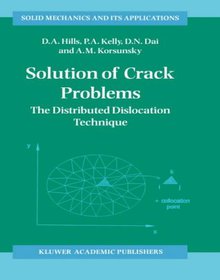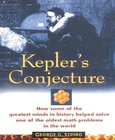Solution of Crack Problems
The Distributed Dislocation Technique

Book Details:
| Publisher: | Springer |
| Series: | Springer |
| Author: | D.A. Hills |
| Edition: | 1 |
| ISBN-10: | 0792338480 |
| ISBN-13: | 9780792338482 |
| Pages: | 308 |
| Published: | Feb 29 1996 |
| Posted: | Nov 19 2014 |
| Language: | English |
| Book format: | DJVU |
| Book size: | 13.44 MB |
Book Description:
This book describes a family of state-of-the-art numerical and semi-analytical techniques for determining stress intensity factors for cracks; the quantities which determine and control the fatigue life of engineering components. Fatigue problems are dominated by behaviour of the crack when it is short, and in the neighbourhood of the source of nucleation, as this is where the majority of the life is used up. A knowledge of crack-tip stress intensity factors in this regime is paramount. The techniques described in this book are very efficient methods of determining stress intensity factors with great precision and computational efficiency. This will allow for accurate estimates of component life and inspection intervals.
Download Link:
Related Books:
Kepler's Conjecture
How Some of the Greatest Minds in History Helped Solve One of the Oldest Math Problems in the World
The fascinating story of a problem that perplexed mathematicians for nearly 400 yearsIn 1611, Johannes Kepler proposed that the best way to pack spheres as densely as possible was to pile them up in the same way that grocers stack oranges or tomatoes. This proposition, known as Kepler's Conjecture, seemed obvious to everyone except mathematicians, who seldom take anyone's word for anything. In the tradition of Fermat's Enigma, George Szpiro shows how the problem engaged and stymied many men of genius over the centuries--Sir Walter Raleigh, astronomer Tycho Brahe, Sir Isaac Newton, mathematicians C. F. Gauss and David Hilbert, and R. Buckminster Fuller, to name a few--until Thomas Hales of the University of Michigan submitted what seems to be a defini...
Handbook of Applied Algorithms
Solving Scientific, Engineering, and Practical Problems
Discover the benefits of applying algorithms to solve scientific, engineering, and practical problemsProviding a combination of theory, algorithms, and simulations, Handbook of Applied Algorithms presents an all-encompassing treatment of applying algorithms and discrete mathematics to practical problems in "hot" application areas, such as computational biology, computational chemistry, wireless networks, and computer vision.In eighteen self-contained chapters, this timely book explores:*Localized algorithms that can be used in topology control for wireless ad-hoc or sensor networks*Bioinformatics algorithms for analyzing data*Clustering algorithms and identification of association rules in data mining*Applications of combinatorial algorithm...
Universal Methods of Design
100 Ways to Research Complex Problems, Develop Innovative Ideas and Design Effective Solutions
"Universal Methods of Design is an immensely useful survey of research and design methods used by today's top practitioners, and will serve as a crucial reference for any designer grappling with really big problems. This book has a place on every designer's bookshelf, including yours!" -David Sherwin, Principal Designer at frog and author of Creative Workshop: 80 Challenges to Sharpen Your Design Skills"Universal Methods of Design is a landmark method book for the field of design. This tidy text compiles and summarizes 100 of the most widely applicable and effective methods of design-research, analysis, and ideation-the methods that every graduate of a design program should know, and every professional designer should employ. Methods a...
2007 - 2021 © eBooks-IT.org



